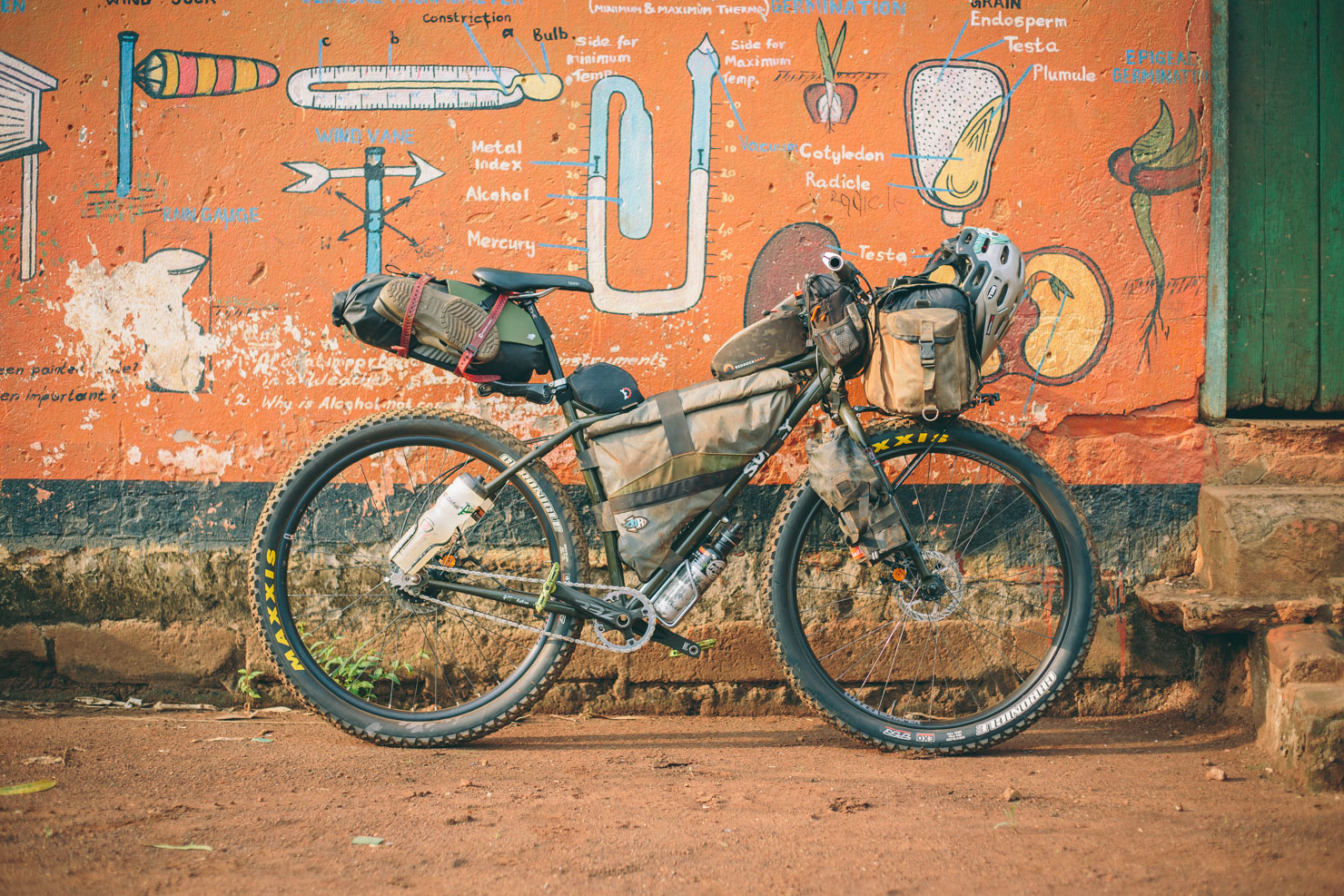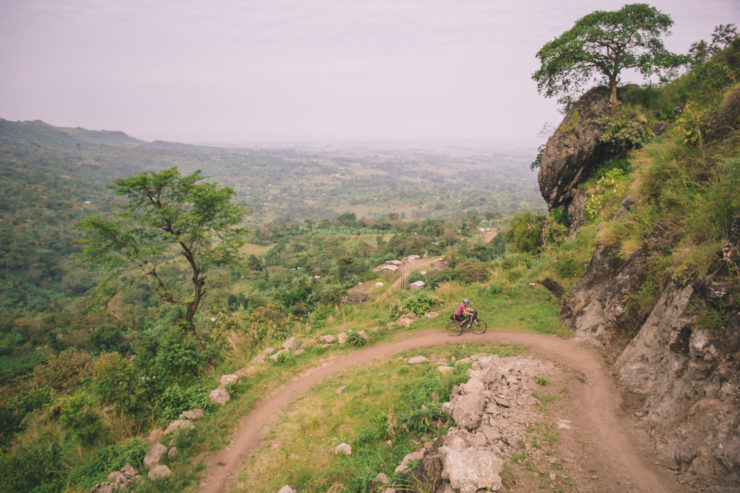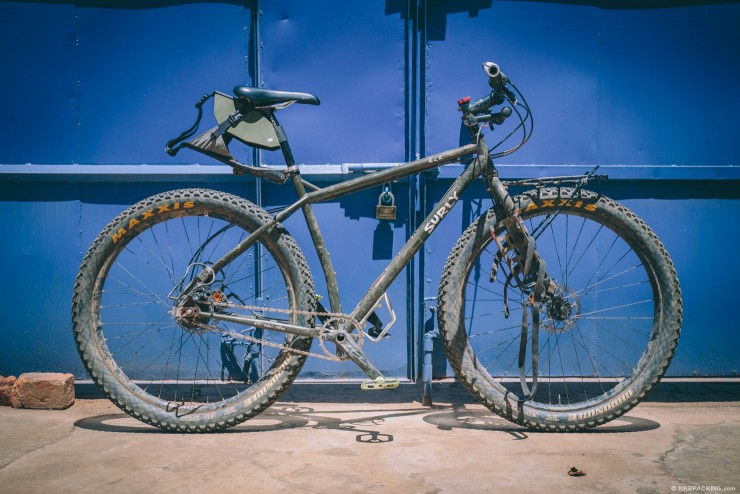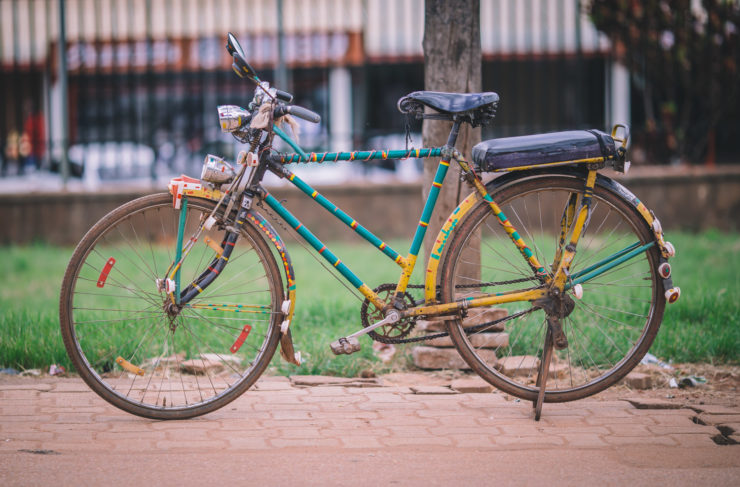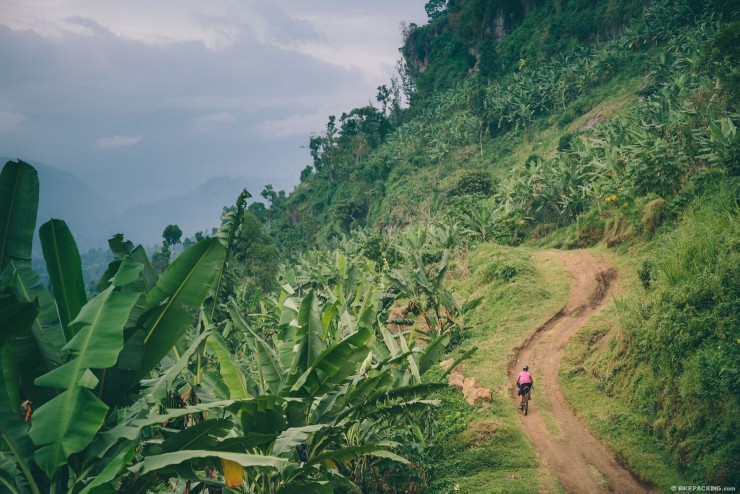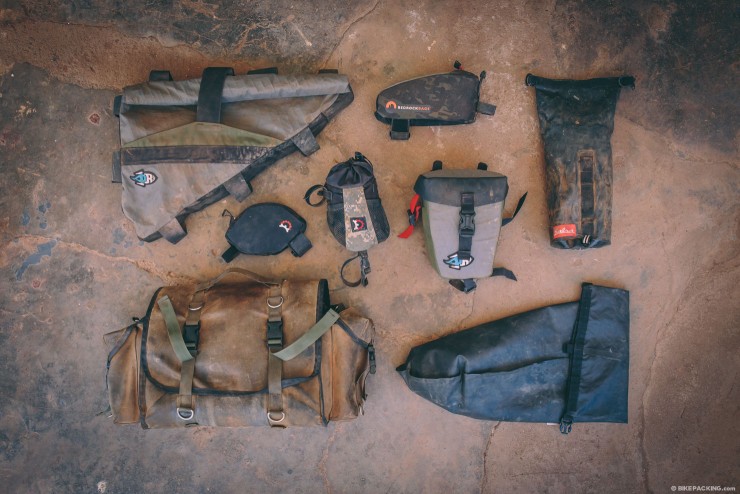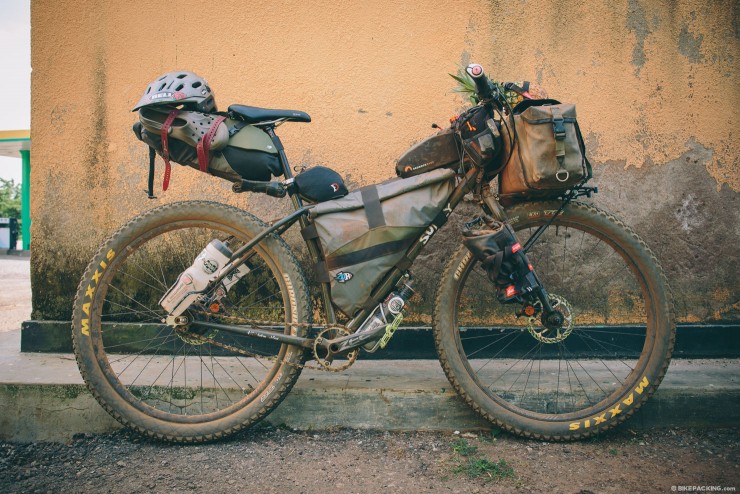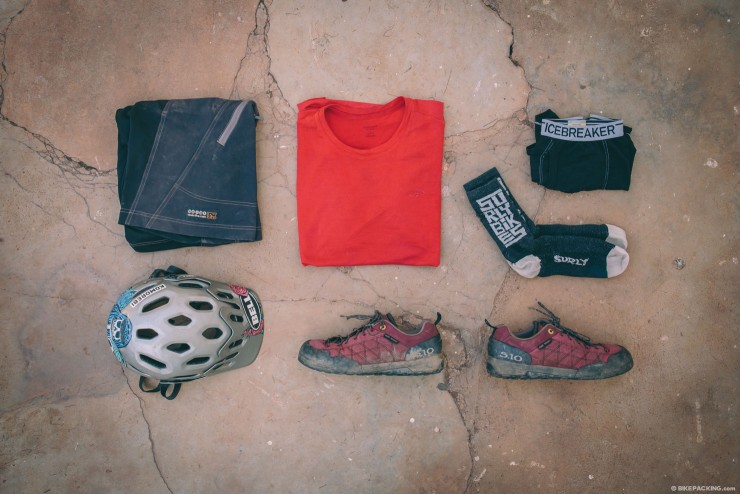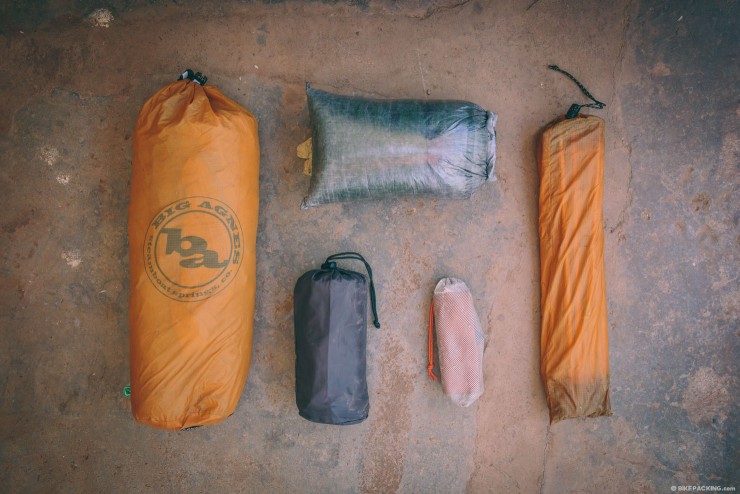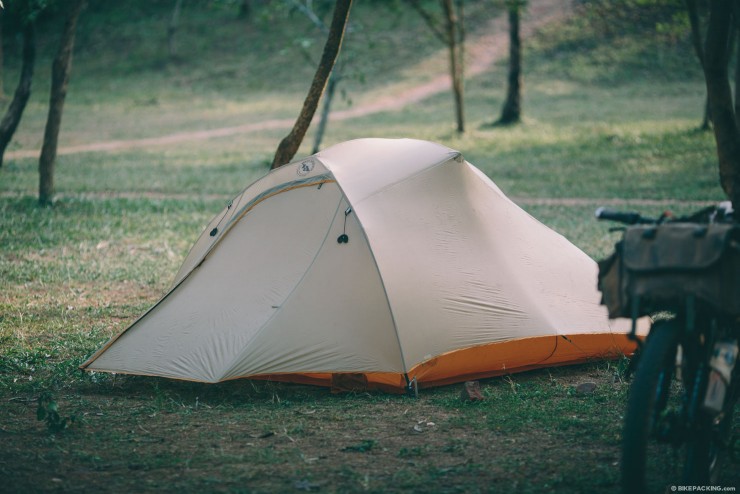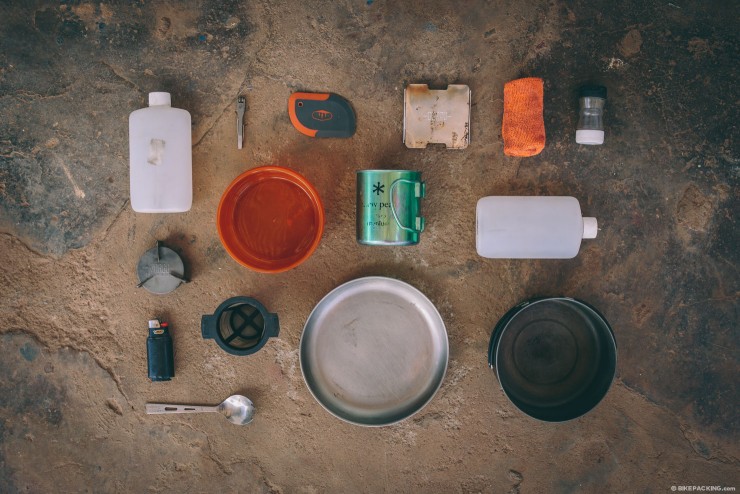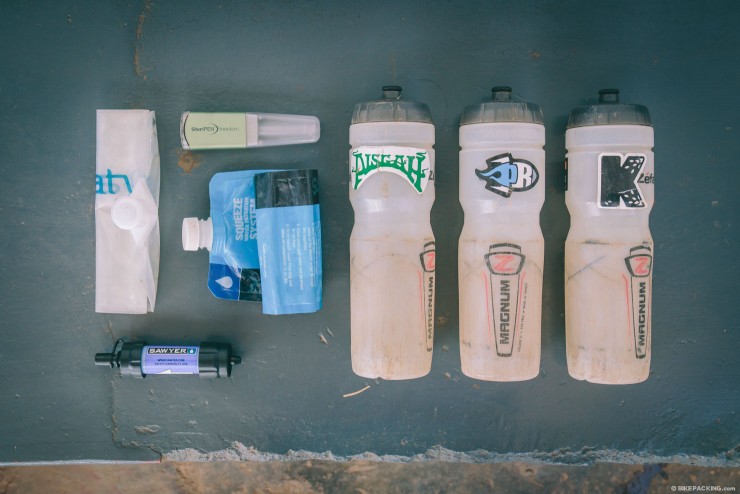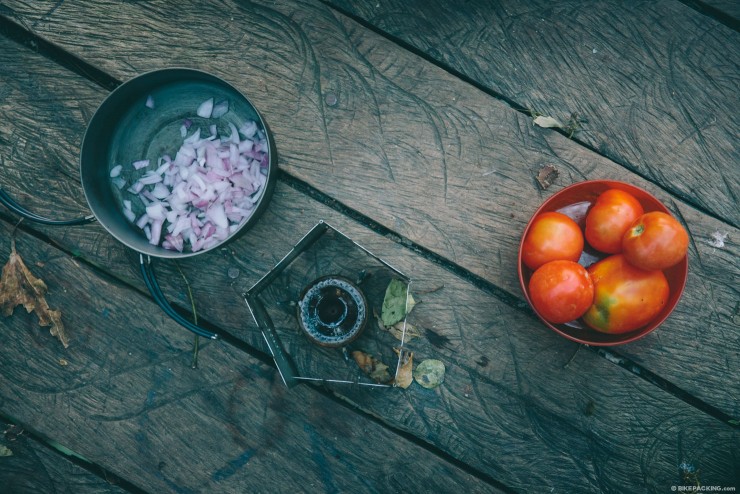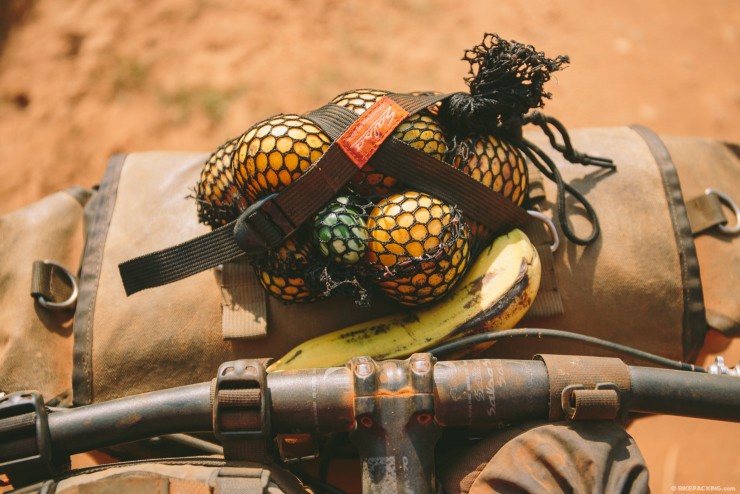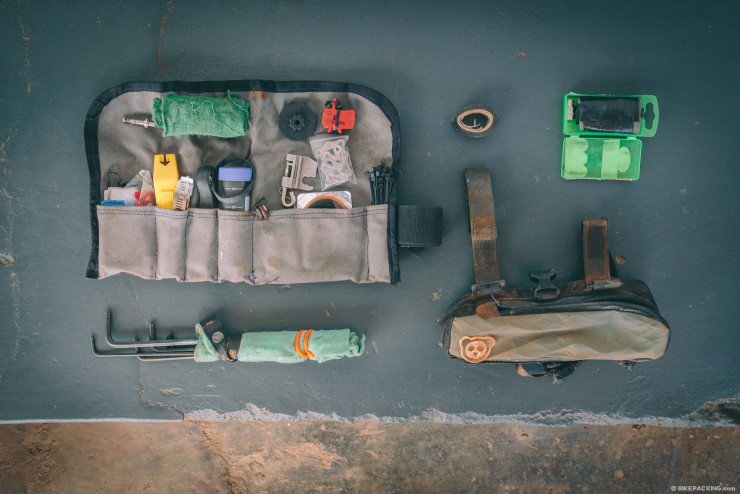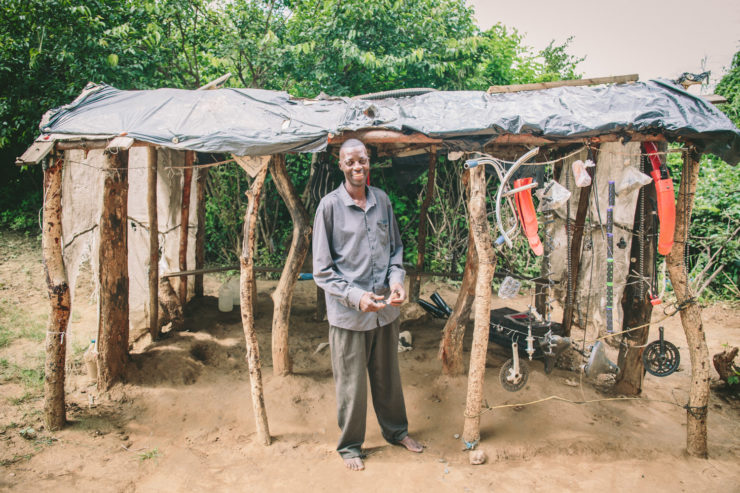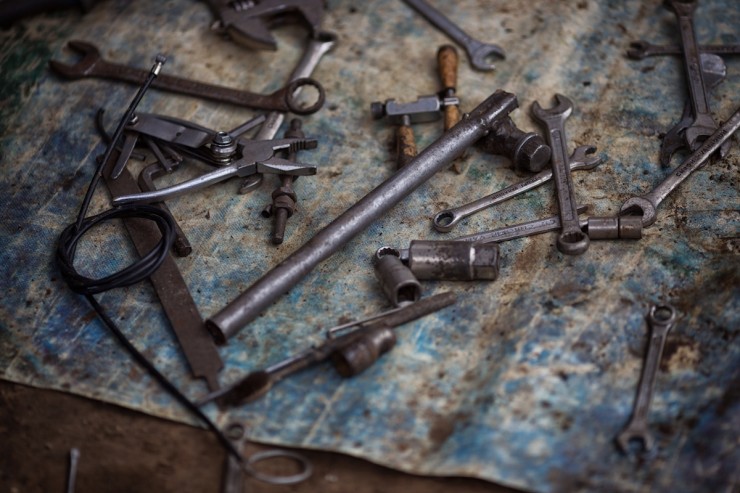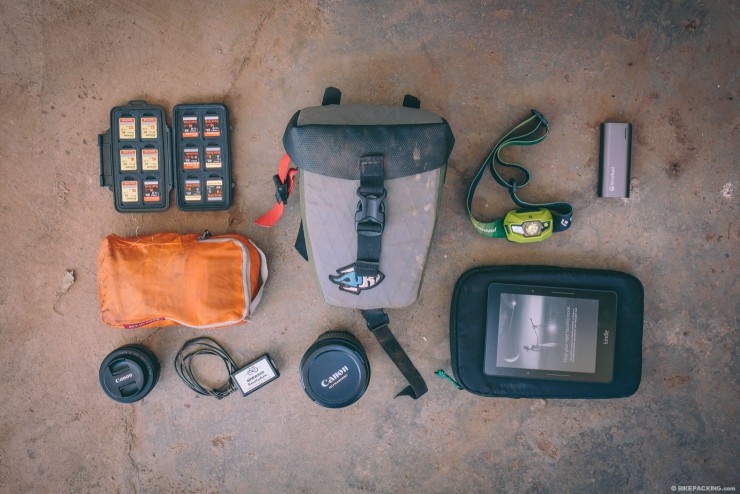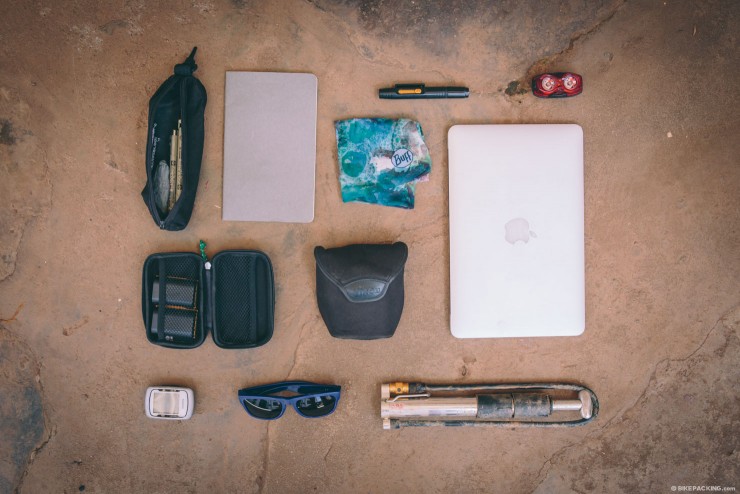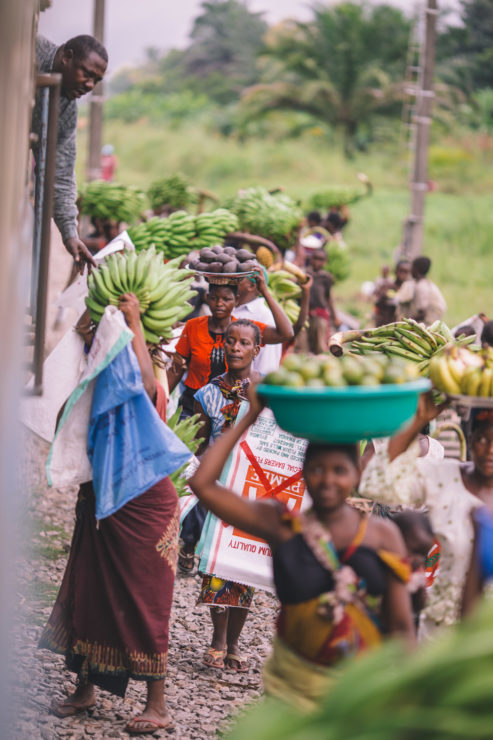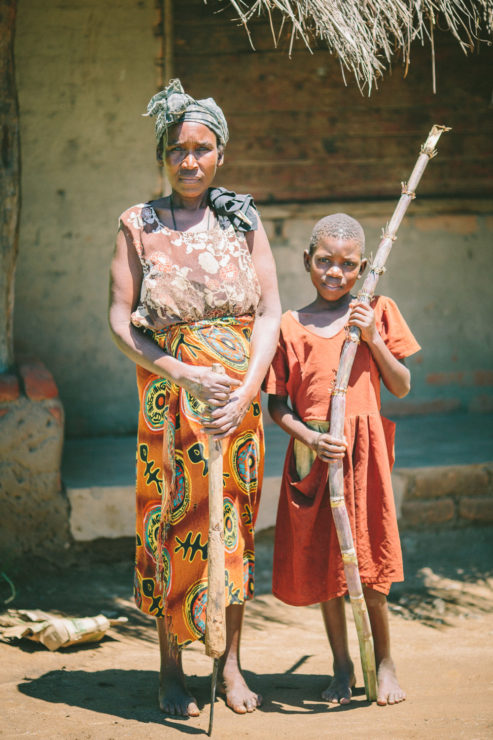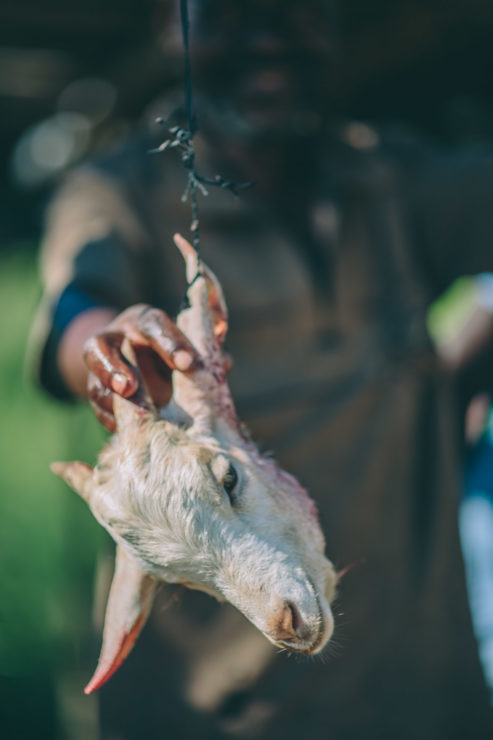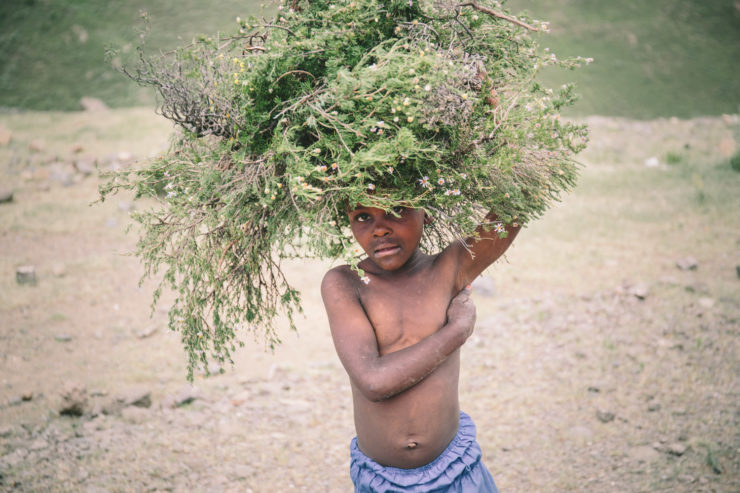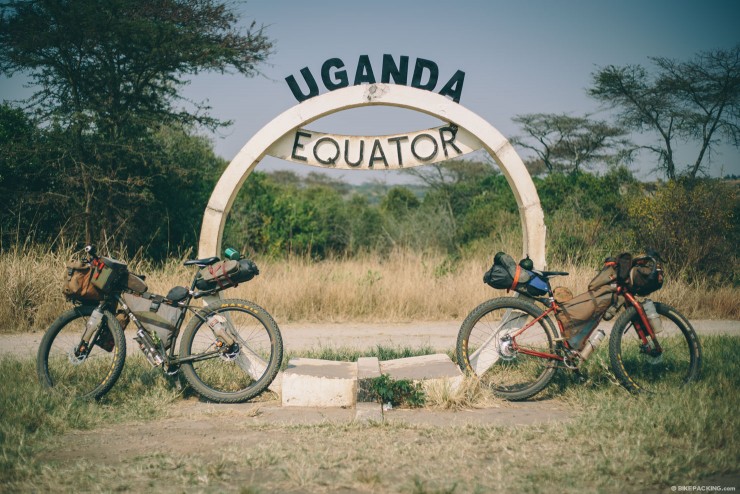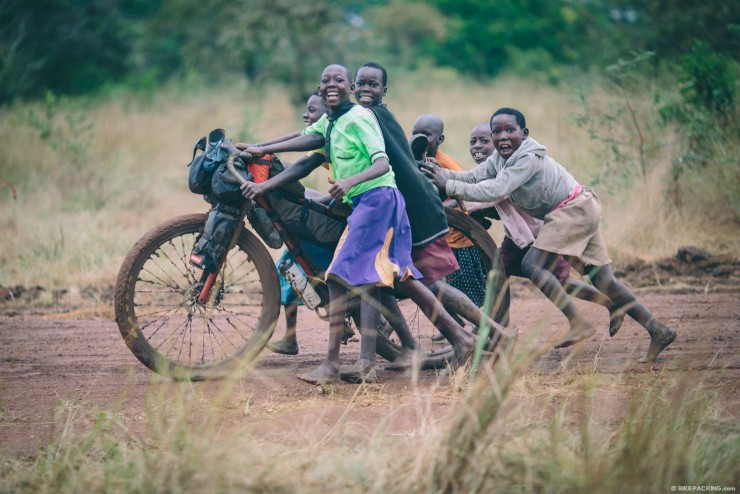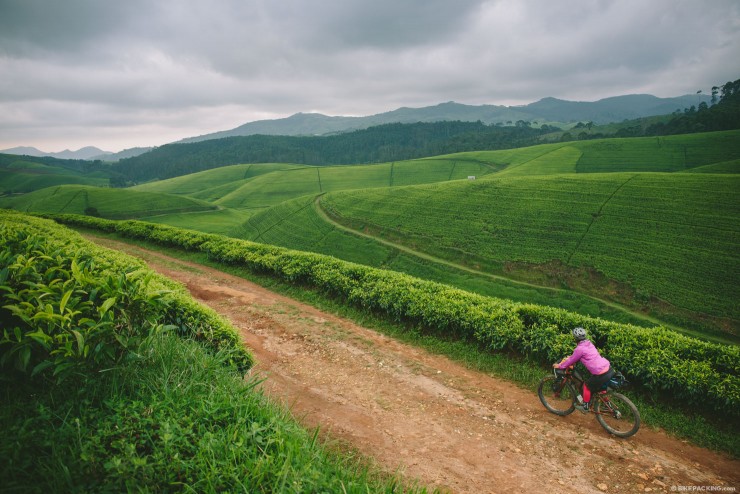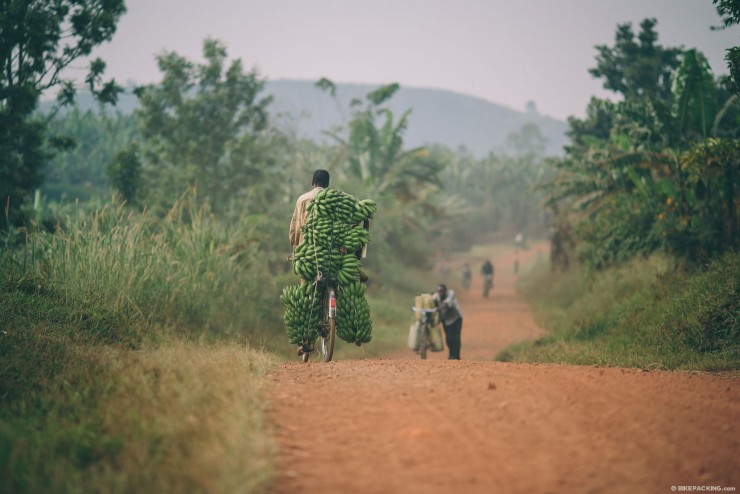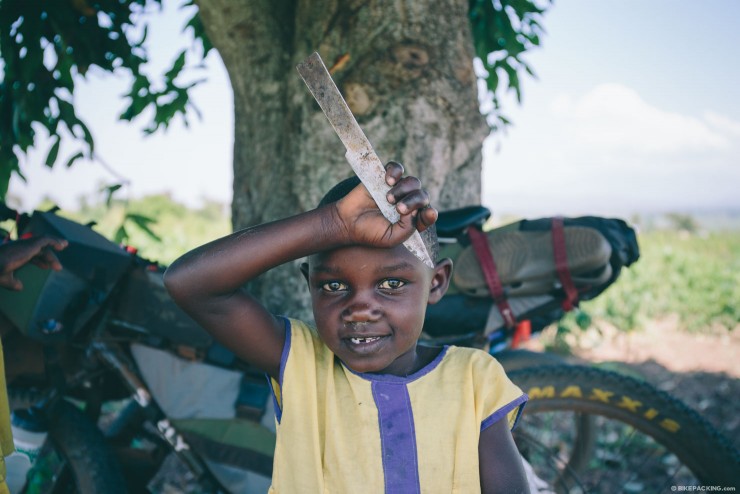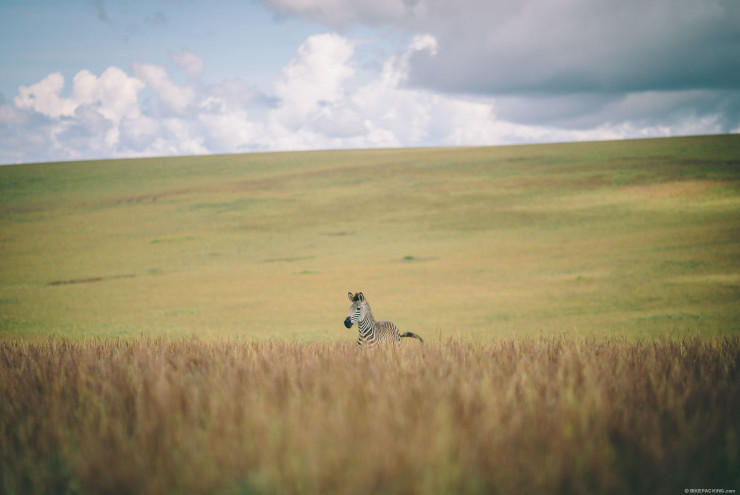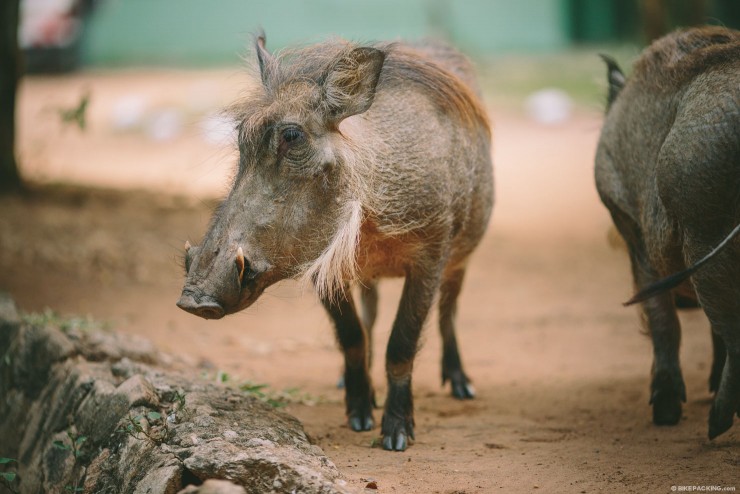The Big Guide to Bikepacking & Touring in East Africa
Share This
As intimidating as it may sound to the uninitiated, bikepacking in Africa can be an incredible experience. As a planning resource for those seeking adventure in the Motherland, here is our full guide to bikepacking and touring east Africa. Complete with travel tips and Logan’s full kit list as used on the Trans-Uganda bikepacking expedition…
Back in 2013 we took a big bike trip from Cape Town, South Africa to Tanzania. You’d think that a single big African cycling excursion would be enough for one lifetime. And for some folks, I’m sure it would be. For others, the allure of Africa is irresistible. To quote an elderly British woman who we met in our travels in Uganda, “There’s something about Africa that just gets in your blood.” For her, this feeling has kept her on the continent for over 50 years. For us, it meant a return for a second trip to the motherland after only a 1 ½ year absence… and we’ll likely go back in the not too distant future.
Why did we go back? That’s a question we’ve been asked many times and by many people, including friends, family, fellow bikepackers, and many of the local people we’ve met along the way. It’s a fair question, I suppose. Traveling by bicycle in Africa is a challenge. Over 25 percent of its landmass is covered in desert, while the jungles and rift valleys of equatorial East Africa can be exquisitely hot and humid. There are dangerous animals, scary viruses and parasites, and, unfortunately, regions and people who experience seemingly ceaseless conflict. Many Africans suffer from extreme poverty and hunger, often the result of political “mismanagement” of their country’s capital. Pedaling there can be, and often is, difficult, exhausting, and sometimes even sad. So, what’s the draw? The short answer is, that despite all of its baggage, the Africa we’ve experienced can also be sublimely beautiful, joyful, and bursting with life like nowhere else we’ve ever been. It is full of wild places, wonderful people, and can be a great place for off-road bike exploration which yields experiences comparable to nothing else on the planet.
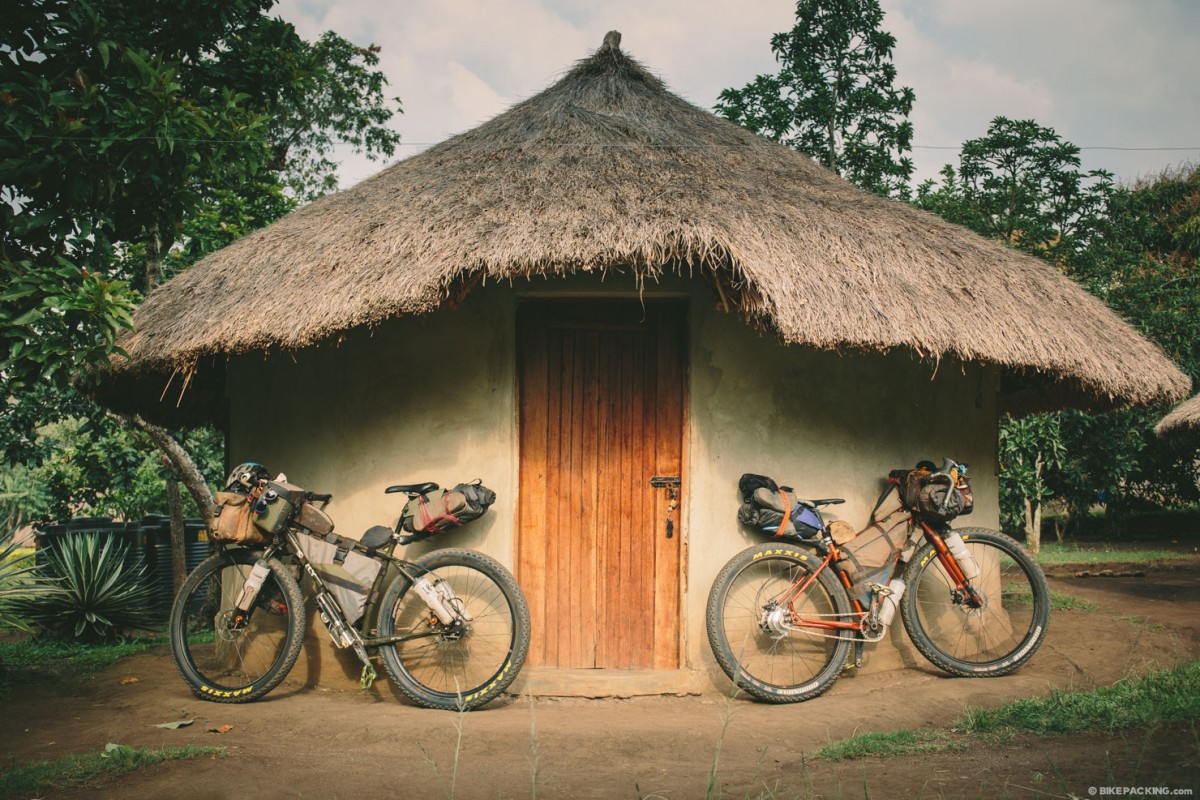
Folks have often asked how we’ve planned our multiple excursions into the African continent. To answer such inquiries, and serve as a compliment to several routes on the site, including our own Trans-Uganda, here is our guide. Naturally, it starts with the bike and gear (a full gear list as used on our last trip), scattered with tips for planning a similar trip. Then find ‘Where to Go’ with several routes we recommend, and ‘Travel Basics’, a section with insight regarding immunizations, visas, and other logistical hurdles. As always, we welcome other tips and insight in the comments section to help evolve this resource over time.
The Best Bike for Africa?
The most popular question we get involves the choosing a bicycle for such an expedition. To get even more granular, we’ll go straight to tire size. If there’s anywhere you should consider sticking to the old-school standards, it’s much of Africa. 26” tires are the ruling party there and it’s often difficult to source even 700c tubes or spare tires in much of the eastern part of the continent — aside from scattered cities, and South Africa where 29ers are prevalent and 27.5″ tires are even catching on.
With that said, I’ve traveled, all told, for over six months in Zambia, Zimbabwe, Tanzania, Uganda, Lesotho, Malawi, and Rwanda on 29+ (29×3″) tires. Ultimately, 29+ is a great bikepacking platform. The added floatation for sandy stretches, the extra circumference and volume for cushion (especially when run tubeless), and the additional traction make it the benchmark for off-road exploration. However because this is certainly beyond old-school, there is a risk versus reward factor with this decision. As such, you’ll find a substantial amount of kit dedicated to tire repair in the Tools and Spares list further down the page. It is worth noting that if you do choose to use plus tires, using 35mm rims allows the ability to substitute a standard 700c tire in the event of a disaster — which may or may not be hard to source depending on your exact location; on my first trip to Africa I carried a spare light 29er tire, just in case (in hindsight this was pretty silly). To illustrate the most infallible choice — if I were to choose a tire and wheel for a never-ending circumnavigation of the continent, per se — it would be a bicycle with 26″ x 35mm rims using a 2.8″ wide tire. This would provide the added floatation and cushion of a plus-size tire bike and access to plenty of spares should the need arise. The 35mm rims would comfortably fit 2.0 or 2.2″ tires that might be found en route. On the same token, Africa is a good place to go suspension free… so another case for higher volume tires.
Regarding the actual bike, theoretically, any bike will do. But if there’s ever a time to put a lot of thought into your rig, it’s parts, and required tools, it’s when planning a trip to Africa. The typical local bicycles found in much of Africa are low-cost, steel-frame bikes imported from China that are basic in operation. Most have a one-speed drivetrain with a massive chain, a coaster brake, bolt on hubs, and standards that likely won’t match anything on a modern touring or bikepacking rig brought from Europe or the US. Consequently, the tools and spares available in most roadside shops fit these bikes — wrenches, screwdrivers, and such. It is far less likely to find specialized bike tools required for various bottom brackets, hubs, and cassettes. However, there are parts and tools to be found — although very few and far between — that can jive with old standards (think 100mm front, 135mm rear, and of course, 26in wheels/tires). Even so, it’s best to have a reliable bike with the appropriate parts and spares needed to serve you for the duration of your trip. For both of our trips I chose to bring the durable, [somewhat] standards-friendly bike, the comfortable, and venerable Surly ECR (or Epic Continent Rambler as I dubbed it). And as we were traveling two, on the last trip we outfitted Gin with the Salsa Deadwood. Both with similar standards, spare parts, and setups.
In my opinion, a steel frame bike with a minimal bikepacking kit is absolutely ideal for touring in Africa. A steel frame is rugged and repairable in the event of a catastrophe. And, one of the beautiful things about bikepacking style bag setup — versus panniers — is that it doesn’t rely on racks… and that’s one less thing to worry about breaking. Not to mention the weigh savings and the fact that riding your bike will actually feel like you are riding a bike, instead of pedaling a tank. Lastly, we both ran Rohloff drivetrains on both trips in Africa. I don’t regret that choice a bit. The ever-present dirt and dust still required a regular chain cleanings, but without derailleurs we had less to worry about.
Tip #1: Stick to the standards.
While my bike of choice for other trips has recently translated to a hardtail with Boost spacing and other ‘new school’ standards, if there ever was a place to have a steel 135mm/100mm rigid and rugged bike, it’s Africa. Especially in a remote and rather isolated country such as Uganda. We’ve twice found ourselves in parts conundrums in Africa. Once in Zambia when Gin took a nice spill and bent her drive side crank. Luckily, the Zambians are an efficient and ingenious lot, and team of three was able to hammer it back from a banana shape to perfectly straight. The second was in Rwanda when my first generation Shutter Precision Dynamo lost a bearing. Had it not been for the mechanics at the Team Rwanda cycling center, our trip may have ended early or I’d have been riding a curiously skinny wheel and tire on the front of my ECR. There are essentially very few modern mountain bike parts in many East African countries, aside from South Africa. In addition, shipping anything to these countries is almost completely out of the question. Take Team Rwanda for instance, they get all their mountain bike and road bike parts by having the chief mechanic fly to the US and fly parts back in suitcases and bike boxes.
Tip #2: Combine efforts.
One of the great things about traveling as a couple is the ability to share gear carrying duties. I usually pack the heavier gear, such as the tent and tool/parts kit, and Gin takes the kitchen. This helps each of us save space to allow for a more full kit (and plenty of room for food) while maintaining a relatively svelte bikepacking style setup. In addition, using bikes with the same drivetrains and fittings helps minimize tools and spares.
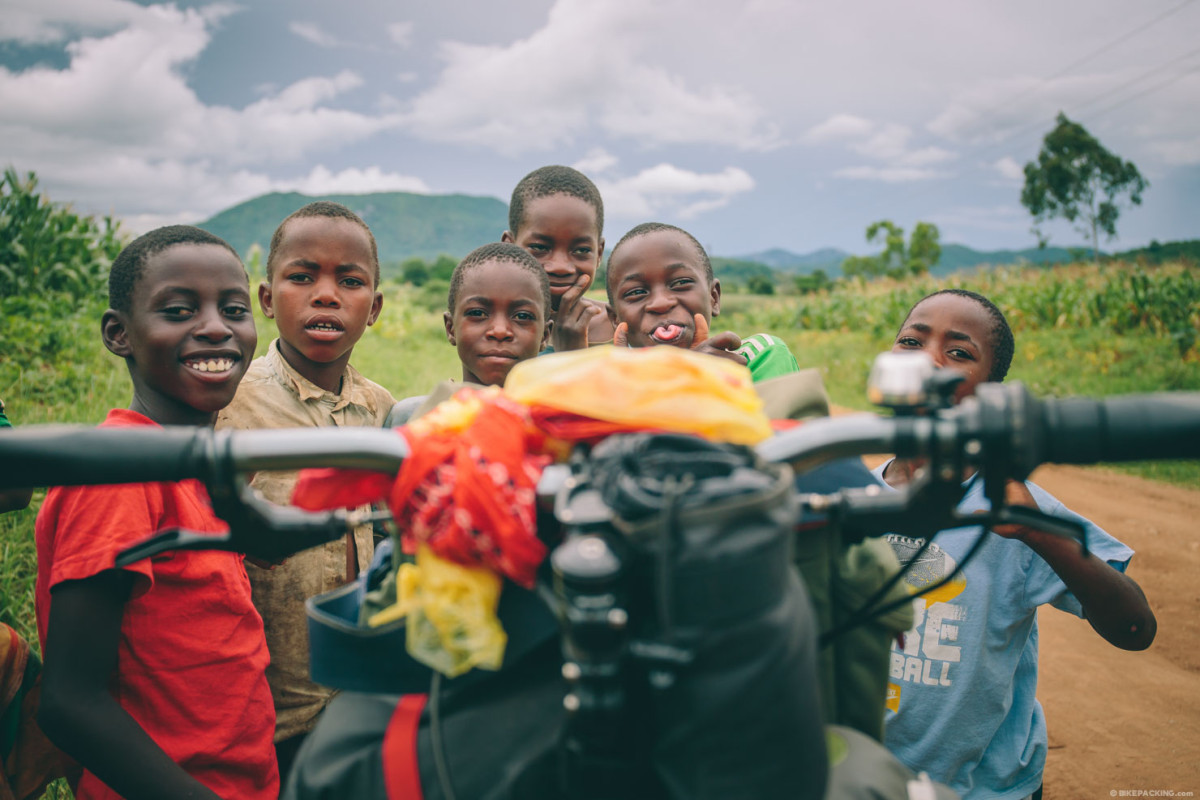
A Bikepacking Kit, fit for Africa
Dialing in the perfect bikepacking kit requires a bit of foresight and clairvoyance into the place you’ll be traveling. Factors include the surfaces you’ll riding on, weather and temperatures, where and how often you’ll be camping, how long you intend on traveling, and of course, what types of parts, spares, supplies, and amenities will be available — or in the case of much of Africa, not available.This particular kit was created specifically for the Trans-Uganda expedition. Even though we’d cycled in east Africa just a few years back, it took a lot of thought to choose the right gear for the trip. And as with every gear kit I’ve assembled for previous trips, it was lighter, leaner, and generally more efficient than its predecessor.
I will note that it’s a little heavy considering my self-imposed burden, camera gear and the requisite tangle of cords and related electronics that go along with it. But for the most part, this kit is relatively minimal and versatile. Here’s a detailed list of everything I carried, and why. Given that this was our second trip in east Africa I had the luxury of knowing what to expect. As such, there’s not much I’d change. Under each category you’ll find additional thoughts and tips related to it.
Bikepacking Bags
A long trip on foreign soil requires a luggage kit slightly above and beyond a sleek, ultralight race setup, especially when there’s photography equipment involved. I knew we’d be rained on; it’s inevitable in East Africa, so I wanted a couple of the bags to be completely waterproof. The waxed canvas DIY long flap saddlebag is generally weatherproof and I had it mounted up front with a Salsa Minimalist rack (now defunct). In the back I used the Porcelain Mr. Fusion Seat Pack, a waterproof and removable dry bag and accompanying harness. For a similar saddlebag available for purchase, make sure to check out the Large Fabio’s Chest Saddlebag by Ultraromance.
- Framebag Porcelain Rocket Orbiter
- Seat Pack Porcelain Rocket Mr. Fusion V2
- Handlebar Bag DIY longflap saddlebag
- Top tube bag Bedrock Dakota
- Stem bag Revelate Mountain Feedbag
- Stem bag (lg) Porcelain Rocket DSLR SLinger
- Rear top tube bag Revelate Jerry Can
- Salsa Anything cage/bag For food and overflow
Notes: This was a very solid kit. The large roll-top bag tends to feel a little heavy up front, especially when paired with a DSLR in the Porcelain Rocket DSLR Slinger. Unfortunately, Porcelain Rocket no longer makes the Orbiter frame pack, but they now offer the similar — and superior — 52Hz Waterproof Frame Pack. It’s worth noting that while the DSLR Slinger is a nice, convenient bag/location for a camera, anytime you store a camera on the handlebars, it take a beating from the perpetual bumps that dirt roads can dish out. Such a bag is great for avoiding a backpack; just be aware that you should have a long bike so your knees won’t be encumbered.
Tip #3: Don’t wear a backpack, but bring one.
This is the second big trip I’ve taken where I brought a packable backpack, or ‘stuff-pack’ as they are sometimes called. This one was the Hyperlite Stuff Pack; it packs up small and weighs nearly nothing. I found having it was invaluable when we needed to carry extra food and water. In addition, it serves as a good accessory to carry gear off the bike. Read more about this and other backpacks here.
Clothing
In Africa you will get dusty, muddy, sopping wet, and there will be week-long stretches without the option for a shower. For such conditions, merino wool is key. It’s great for day after day riding and promises to remain odor-free. This clothing list was handpicked based on bugs, weather, and staying visible.
On the bike:
- Riding Shorts NZO Dobies
- Anti-bacterial tshirt Icebreaker Tech T Merino Wool
- Anti-bacterial Undies Icebreaker Merino Wool boxer briefs
- Lightweight Wool Socks Surly Block 5” Socks
- Riding/travel Shoes Five Ten Guide Tennies
- Helmet Bell Supermoto
Off the bike:
- Lightweight Pants Patagonia Quandary pants (lightweight, durable)
- Thin Travel Shirt Prana Ascension (lightweight travel shirt)
- Lightweight Merino Baselayer Surly Wool Raglan shirt (lightweight anti-microbial layer)
- Tshirt Cotton T
- Lightweight Socks Giro Merino Wool
- Camp shoes Crocs
- Towel DIY Linen towel
- Dryer Mesh bag for air drying
- Spare Undies Exofficio boxers
- Lightweight Rain Jacket Montbell Versalite
- Minimal Down Jacket Montbell Anorak
Notes: I found this clothing kit to be nearly perfect. NZO shorts are bar-none for quality. Five Ten’s Guide Tennies are probably the best travel shoe out there. And the Surly merino socks held up through six weeks in Spain and two months in Africa. In addition, Icebreaker merino tech Ts are excellent, although don’t expect to get over four months out of one if that’s your only riding shirt. Had it been a shorter trip, I’d have ditched the Surly Raglan shirt. I only wore the latter twice. It’s a great travel shirt, but I could have made due with just the Montbell Anorak. For me, off the bike clothing in Africa means long sleeves and long pants, both for mosquitos and sun protection. The Patagonia Quandary pants along with a super lightweight long sleeve shirt (Prada Ascension) make a comfortable outfit, even when it’s hot.
Tip #4: Linen makes a great towel.
One great addition to this kit was the DIY towel that Gin came up with. She made one for each of us from a 2×2′ (0.6 meters sq) piece of linen; it weighs nothing, takes up very little space, and gets you almost all the way dry after a shower or wash off.
Tip #5: Bring a bright color [wool] jersey; just not blue.
Drivers in most of Africa are crazy. While most of our time in Uganda and Rwanda were off the main roads and on dirt tracks and footpaths, there will always be a couple stretches where there is traffic. So as with any other trip, wear brighter colors and lights to be seen. In addition, much of Africa can be hot and muggy. And there are often long stretches without a shower. Wool is king in these types of conditions. The natural antimicrobial properties of merino are a lifesaver. I often bring an Icebreaker Tech T Lite in orange or red. Don’t bring blue as it attracts tsetse flies, and there is nothing worse than fending off tsetses on a bike.
Camping/Sleeping
There are a lot of camping opportunities in East Africa. Whether in a village, on someone’s farm, or wild camping, we pitched our tent frequently. Regarding wild animals (see more below under Travel basics), there are obviously many places you don’t camp, but for the adventurous, there are often campsites in or on the edge of parks where tent camping is an option and there is a chance of experiencing animals up close and personal. There are all kinds of stories floating around about people’s camping experiences in remote locations in east Africa. One that stands out actually came from National Geographic about a lady solo camping near the Malawi-Tanzania border (a place near where we had cycled on our previous trip). As she was in her tent shortly after dusk, a lion stopped by, yawned, and laid down on the edge of her tent… on her arm. She was able to remain still and quiet, and eventually fell asleep. When she woke up the lion was gone. The closest we got to this was having a hyena walk through camp making horrifying noises. Either way, the wives’ tale is that most animals ignore people in tents. On a smaller scale, there are an infinite number of bizarre bugs in Africa, so having a netted shelter is a necessity.
- 3p Tent Big Agnes Fly Creek UL3
- Summer-rated Sleeping Bag Enlightened Equipment Enigma 40°
- Sleeping Pad Thermarest NeoAir Lite
- Pillow Big Agnes inflatable Pillow
Notes: I’ve grown quite attached to my Big Agnes Pillow. It’s been on every trip I’ve taken since 2012… pretty impressive. The Thermarest NeoAir is a great sleeping pad; I’ve since switched to the Sea to Summit UL Sleeping Mat though. A 40° sleeping bag is perfect for this type of trip too. Read why as well as a review of the EE Enigma here.
Tip #6: Traveling two? Bring a tent for three.
Most folks familiar with backpacking tents know that a two person tent isn’t really ideal for two people. We’ve opted for a 3p tent on most trips. Having space for gear is usually a good idea in many camping situations, especially those involving public spaces. Seven times out of 10 you’ll have an audience as you set up your tent, and as soon as you wake up, so it’s comforting having your valuables inside the tent, or at least tucked away in the vestibule. We’ve found the Big Agnes Fly Creek UL 3 to have a nice blend of lightweight and spacious characteristics. It’s also held up through both of our big trips in Africa.
Kitchen, Food and Water
Food types and availability differ from country to country, but restaurants and street vendors are generally inexpensive options and can often found near towns, cities, and sometimes in smaller villages. Even so, we found camp cooking to be a regular activity in east Africa. Pasta was a staple that could usually be found in small village shops. Otherwise, in larger towns there are often Chinese run shops with an odd assortment of things. Often it was up to our imagination, but cooking is a necessity. Fresh fruits and vegetables are plentiful in East Africa. Cucumber and tomato salads are a refreshing option. Fresh pineapples are amazing too, albeit a little difficult to strap to the bike. Small stores carry cookies, candies, and groundnuts (peanuts). In Uganda, the Rolex, a fried omelette rolled in thick chapatti, was our go-to source of calories. Even in the most run-down tiny town someone will be cooking these on the side of the road. As for “eating out”, expect to eat a large portion of ground maize(pap or ugali) or green banana(matoke) with every meal.
In most East African villages (or sometimes in between) you will often find a working hand-pump well, so access to water is not a big issue generally speaking. We always filter our water, as sanitation is an ongoing problem in this part of the world. We’ve heard a few horror stories about various amoeba and parasites that people have experienced while traveling there. This required a two-fold approach for water that wasn’t not crystal clear — first with the Sawyer Mini squeeze filter and then following with UV Steripen. If the water was clear we simply used the Steripen liberally. The Sawyer filters most bacteria and the Steripen zaps viruses. Here is our full camp kitchen.
- Pot Vargo Titanium 1.3L Titanium (good size for two people)
- Alchohol Stove Vargo Triad
- Windscreen Vargo folding windscreen
- Mug Snow Peak Titanium
- Bowls Two nested GSI plastic bowls
- Plate Snow Peak Titanium
- Fuel (alcohol) Storage REI plastic flask
- Cleaning GSI Compact Scraper
- Coffee MSR travel coffee filter
- Water bottles 3 Zefyl 1L bottles, 1 Klean Kanteen 22oz
- Filtration Steripen (USB rechargeable), Sawyer Mini squeeze filter and bag
- Additional Storage Platy 3L bladder
- Other Bic Lighter, cloth, flint, GSI S&P
Notes: I was unimpressed with the Vargo Triad stove. It didn’t burn fuel nearly as well as the Trangia we brought on previous trips, and it doesn’t have a simmer option. For those reasons I have since gone back to the Trangia. The GSI Compact Scraper is clutch. And, REI flask bottles are a great way to stow fuel; although any plastic bottle will do in a pinch when using an alcohol burner.
Tip #7: Look for purple fuel.
So far, in every country we’ve visited in east Africa — South Africa, Lesotho, Zambia, Zimbabwe, Malawi, Uganda, Rwanda, Tanzania — it’s fairly easy to source reliable alcohol stove fuel. It usually comes in plastic bottles that resemble a small bottle of water, only the fuel is tinted purple (to warn people to avoid consumption). Surprisingly, we found it available in many stores, even in small villages.
Tip #8: Plan for a lot of water capacity.
Africa consists of many different microclimates and geographical conditions. As such, we found throughout our travels that water is generally unpredictable — from Cape Town all the way up to northern Uganda. But, there’s usually a well somewhere in or near every village. There are many NGOs that build these wells, and they are often dependable, but occasionally dry. Three liters has been a good baseline for carrying capacity, although in desert regions, such as the Karoo, we often carried 10 liters or more between two of us. I would typically recommend a carrying capacity of 5-8 per bike. I had three on my ECR (two with this hack, and two with this one on a prior trip) as well as a foldable 3-liter Platy bag that I could use in my lightweight packable backpack. Also consider Wolf Tooth’s B-RAD system.
Tip #9: Water filtration X 2.
Typically on less adventurous trips, I might carry just one type of filter. For our trips in Africa we’ve carried both a Steripen and a Sawyer. And often, we used both. There are lots of amoeba and bacteria, even in well water, so properly removing bacteria and viruses was a must for us.
Tools, Spares, etc.
As mentioned, don’t underestimate how hard it is to get bike parts in east Africa. Here’s our complete tool and spares list…
- Allen wrenches Park Tool (full set)
- Additional tools PDW 3wrencho, tool for crank bolt, Torx tools
- Chainbreaker removed from Crank Bros tool
- Bolts Assorted spare bolts
- Tire repair Patches, boots, 2 bottles Orange Seal, lever, needle/thread, super glue
- Brake pads 2 spare sets
- Cables 2 cables for Rohloff or brakes (stored in handlebar tube)
- Tubes 2 spare 29er tubes
- Spokes 1 of each in seat post tube
- Additional repair pipe clamp, several zip ties, electrical tape, Gorilla tape, super glue
- Tire Repair super glue, needle/thread
- Additional Spares Chain, Quicklinks, valve stem, bottle chain lube
Tip #10: Think through required tools.
Just as you shouldn’t underestimate how hard it is to get parts, think the same way about tools. We found ourselves in Zambia in need of a crank-puller. While this isn’t a tool I’d carry, it was nearly impossible to find. We got lucky. So make sure you think of your parts and what tools are required to make repairs or adjustments. Also see our Bikepacking Repair Kit post.
Tip #11: Consider your drivetrain.
On our last two trips in Africa we’ve chosen to run a Rohloff drivetrain, both for reliability and ease of maintenance. The Rohloff is generally bombproof so you don’t have to fret about extra derailleur hangers and such. In addition, keeping a chain clean is far easier with a single ring setup.
Tip #12: As always, go tubeless.
Our first time in Africa, we used standard tubes impregnated with a little Stan’s sealant. This didn’t cut it. There are thorns, Acacia, and tons of other things out there to threaten tires. A true tubeless setup is key. Here’s our guide to Traveling Tubeless.
Gadgets
Lastly, for reference, my list of electronics and gadgets. With mobile data on the rise in much of Africa, even in rural towns, there are plenty of options for connecting to the the outside world. Several mobile companies — these differ depending on country — offer pay as you go cards and some hotels have wifi (although it’s often terribly slow, depending on where you are). You are best to rely on mobile data.
- Photography Canon 6d, 135mm f/2, 24-70mm f/4, SD cards, charger, 2 spare batteries
- Entertainment Kindle, headphones for iPhone, pencils/sketchbook, binoculars
- Charging Sinewave Revolution/Dynamo, small Lime cache battery, cords
- Lights Black Diamond Revolt (USB), PDW blinkie light
- Navigation Small Garmin (recording), iPhone/Gaia GPS
- Other Buff, sunglasses
Tip #13: Books/guides.
If you are reader, and/or need to carry guidebooks, the Kindle makes a great travel companion. Lonely Planet guidebooks are somewhat helpful for information regarding travel logistics and most are available in eBook format (or on Apple iPhone).
Tip #14: All you need is a phone.
I am a complete convert to using my only my iphone for GPS navigation. Gaia GPS makes a great tool; and with the base maps downloaded in advance, the iPhone can be left in Airplane mode run on a single charge for up to a week. Here’s our guide for using a Smartphone as GPS. Another great resource, although sometimes outdated, is Tracks4Africa.
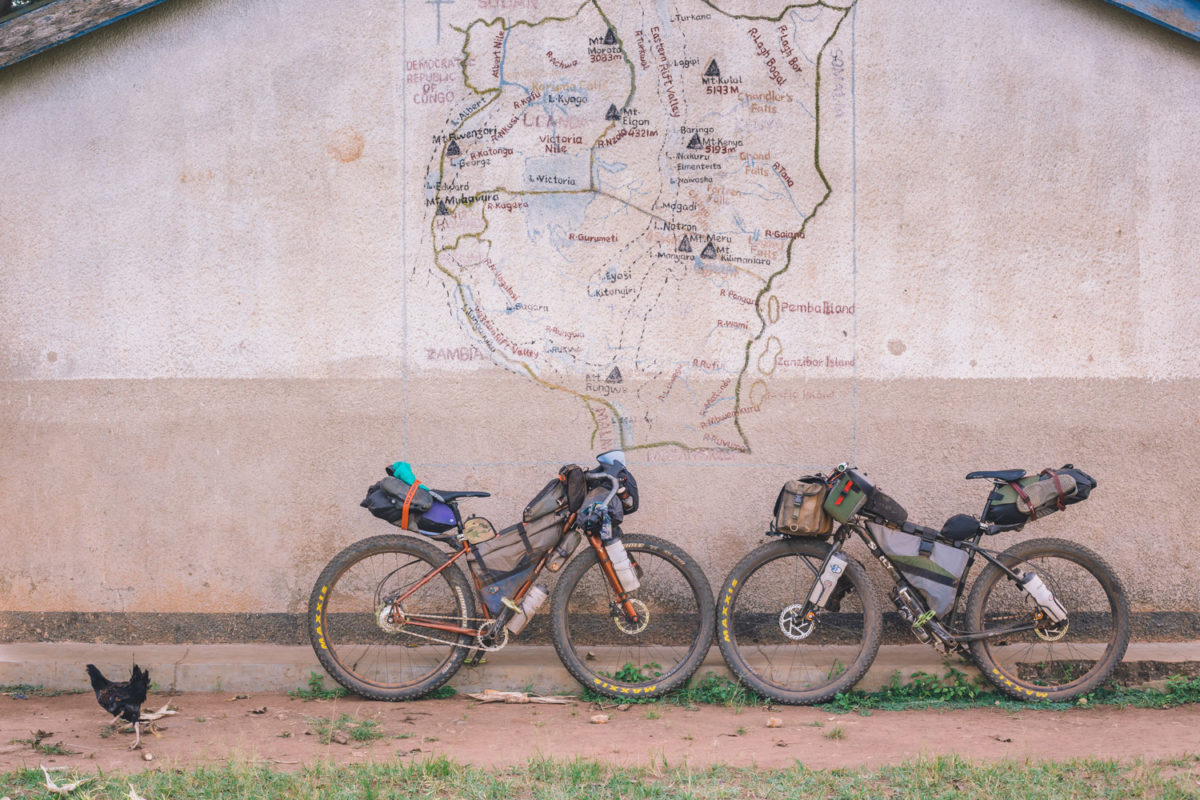
Where to go
As mentioned, Africa has a wealth of options for dirt-road bikepacking, gravel adventures, and even single track footpath exploration; there are infinite possibilities as far as creating a great route. When we designed the Trans-Uganda, we looked for dirt roads and footpaths connecting villages; there was no shortage of either. For reference, here are few east Africa routes we have in our database:
Trans-Uganda (1312mi/2111km, 40 days)
This 1,312 mile epic loop delivers an unforgettable experience via a mix of singletrack trails, jeep tracks, and the most rugged dirt roads on the continent… all the while passing through the sights and landscapes that makes Uganda ‘The Pearl of Africa’.
Congo Nile Trail, Rwanda (160mi/257km, 5 days)
One of the best bikepacking routes in East Africa, Rwanda’s Congo Nile Trail traverses a scenic stitchwork of dirt roads, lakeside singletrack, and a rerouted pass through the forested Nyungwe National Park. This a bucket list ride for any bikepacker, and a great introduction to Africa for those yet to pedal in the motherland.
Dragon’s Spine, South Africa (2500mi/4023km, 60 days)
The Dragon’s Spine route passes 2500mi across South Africa connecting the Cape winelands to the expansive karoo, up to the “roof of Africa” in the Lesotho Highlands and down to the Limpopo River at the doorstep of the rest of this wild continent.
Nyika National Park, Malawi (141mi/227km, 3 days)
Accessed by just a single rough dirt road, Malawi’s largest national park is easily the most enchanting place in the country. Towering at over 2500m above sea level, the 3200 sq km park’s sublime grassland flashes with zebra, Roan antelope, eland, bush pig, 400 species of bird, and over 200 species of orchid. The perfect place to ride a bike! Warning. Not for the timid.
Western Cape Passes, South Africa (473mi/761km, 9 days)
A wonderful bikepacking route on mostly gravel and dirt roads weaving in and out of the Swartberg and Cape Fold ranges. This particular route climbs over and through more than 15 named passes and poorts.
Inner Traverse, Lesotho (128mi/206km, 3 days)
Albeit slightly fragmented (we’d like to go back and creat a fuller route in Lesotho), this is an incredible off-road route that dishes out quad-wrenching climbs, yields magical flowey tracks through hillside villages, and culminates with an epic descent down the legendary Sani Pass.
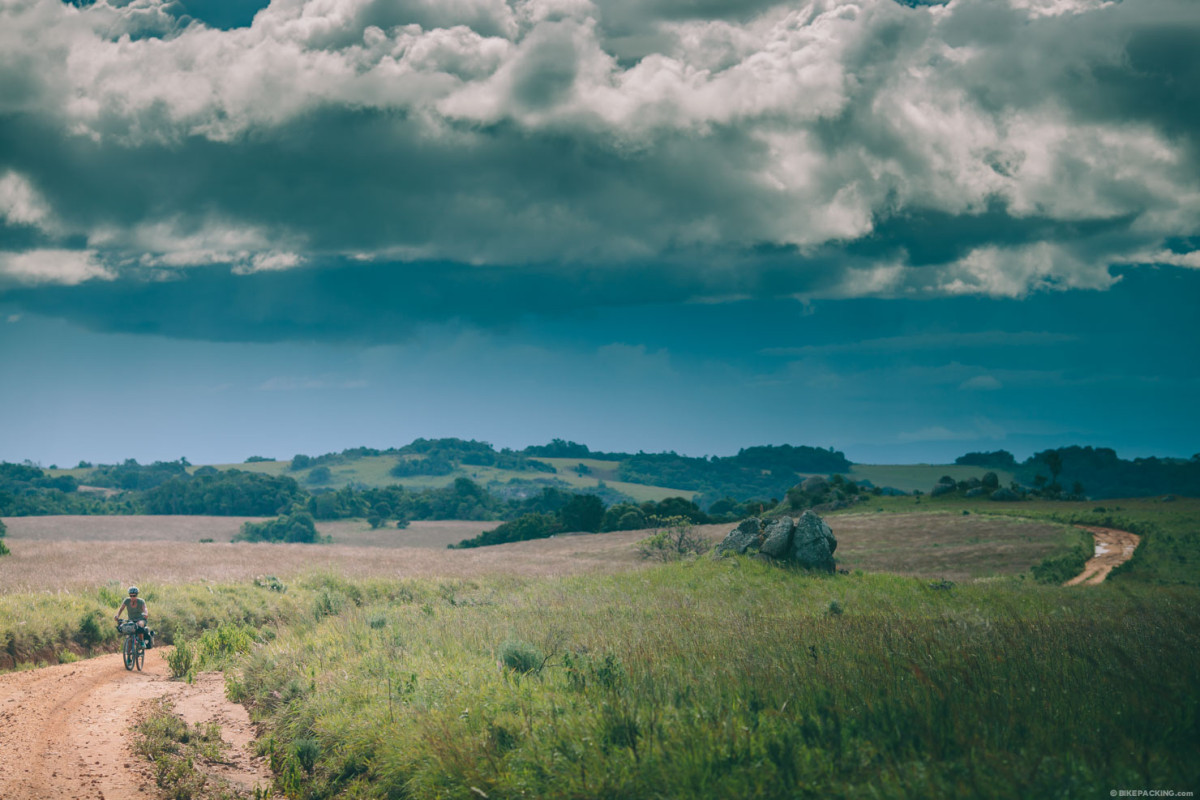
Travel Basics
If you are planning to bikepack anywhere in Africa, be prepared for the inevitable comments and questions that well-meaning friends and family will ask. Are you crazy? Do you have a death wish? What about all the diseases you could catch? What about all of the lions? Aren’t you worried about getting kidnapped? Lots of people have skewed perceptions of Africa. Africa is the second largest continent on the planet, and it is an incredibly beautiful and amazing patchwork of geological, political, ethnic, social, and biological diversity. For a myriad of reasons too complex to tackle here, Africa, as a whole, is often seen as a dangerous place. Of course there are regions of the immense continent that are best avoided. Those locations change over time, so it is always wise to do a little homework regarding the current political and social situation in the areas where you plan to travel. The US Department of State’s website lists current travel advisories by country. Note: Take these warnings at your own logical discretion. In our opinion, they seem to have been a little sensationalized as of late.
All of that being said, we have never felt threatened over the course of our travels in East Africa. On the contrary, we have experienced amazingly warm and friendly people who, given the opportunity, will go out of their way to make you feel at home. There may be some unwanted attention at times (Ok, maybe a lot of attention most of the time), but it’s all in the spirit of curiosity, and isn’t that why you are there as well?
Members of the LGBTQ community should also be aware that in eastern Africa, particularly in Uganda, recent evangelical-led campaigns against homosexuality have resulted in a high level of homophobia sometimes resulting in violence. Consequently, discretion is vital.
Vaccinations and Immunizations
We advise you to visit a travel clinic at least 4-6 weeks prior to your departure, so that you have ample to time to receive any vaccinations you may need. Many vaccinations require multiple doses for optimal effectiveness, and certain vaccinations should not be given at the same time as others. Also, it can take some time to develop post-inoculation immunity. If your travel plans don’t allow for such a visit, please refer to the Center for Disease Control and Prevention (CDC) for information related to traveler’s health. On the website, you can find suggested vaccinations by country. Armed with that information, contact the health department, clinics, or medical providers in your area to see who carries the specified vaccines. As a last ditch effort, it is possible to receive some vaccinations en-route to East Africa. However, keep in mind that a Yellow Fever certificate of vaccination becomes valid 10 days after the date of receiving the vaccination. Visit this site for a list of airport hubs offering Yellow Fever and other travel-related vaccinations.
In general, make sure you’re up-to-date on all routine vaccinations. These vaccines include measles-mumps-rubella (MMR) vaccine, diphtheria-tetanus-pertussis(DTP) vaccine, varicella vaccine (for those of you who’ve never had chickenpox), polio vaccine, and your yearly flu shot. Note, the flu is endemic year-round in most of Africa. If you have health insurance (in the US) or live in a country with universal healthcare, you should be able to receive these vaccinations at no cost. Additionally, in the UK, typhoid, hep A, and cholera are usually available free of charge on the NHS. It’s smart to get vaccinated against Hepatitis A and typhoid as both can be contracted from contaminated food and water, something you can’t always control if you like to eat out.
Hepatitis B
Hepatitis B is also something to consider. Hep B can be contracted through sexual contact, contaminated needles, and blood products, so CDC recommends this vaccine if you might have sex with a new partner, get a tattoo or piercing, or have any medical procedures during the course of your travels.
Rabies
Rabies vaccinations are pretty pricey (at least in the US), but for cyclists, they may be worth the investment. Human rabies is almost always fatal and finding timely post-exposure treatment in off-the-beaten-path east Africa is far from a sure bet. Preventative vaccination can provide inoculated individuals who have been exposed to the virus with enough time to reach the help they need as well as shortening the period of time and number of injections they would need for treatment.
Yellow fever
Yellow fever is the only disease specified in the WHO’s International Health Regulations(IHR) for which countries may require proof of vaccination from travellers as a condition of entry. Tanzania, Kenya, Uganda, Rwanda, and Burundi all require proof of vaccination from those individuals arriving from countries with risk of transmission, even if that risk was limited to the time they spent in a country’s airport. To see the CDC’s list of countries with risk of yellow fever transmission, click here. *Remember to carry your Yellow Card, the documentation that provides proof of vaccination, with you. It may not always be requested by immigration officials, but if it is, you’ve got to have it.
All of the vaccinations can be quite expensive. Take advantage of any free vaccinations you can receive. Hint to Americans… It may be worth planning an extended layover in a city or country where vaccines can be acquired at more reasonable rates. The websites listed actually have the prices for vaccines listed. For pricing in the US, call a local provider.
http://www.travelhealth.ie/Prices/ – in Dublin
http://www.citydoc.org.uk/travel-clinic-fees/ – in London
http://traveldoctor.co.za/price-list-johannesburg/ – in JohannesburgMalaria
Prevention is the best medicine. Avoid getting bitten by mosquitos. Wearing long pants tucked into socks and insect repellents that contain at least 20% DEET, max 50% is highly advisable. We like Ben’s Wipes and find that one wipe is large enough for two people. Consider treating clothing and gear, such as tents, with permethrin. Be aware of peak mosquito hours. The peak biting times for many mosquito species is dusk to dawn. However, Aedes aegypti, one of the mosquitoes that transmits yellow fever virus, feeds during the daytime. When staying indoors, opt for screened or air conditioned rooms. A strong fan can also help.
Choosing the right anti-malarial depends upon the destination and the individual. In East Africa the species of malaria that is transmitted is chloroquine resistant. Atovaquone-proguanil (Malarone), doxycycline, or mefloquine (Lariam) are the recommended prophylaxes. Each medication has its own benefits and drawbacks. We have used Malarone without any problems, and our insurance has covered the cost.
Visas and Red Tape
Visas are required from tourists of most nationalities in order to enter any of the East African countries. The visa situation can be a bit confusing, so it’s a good idea to check out each country’s embassy website for the most up-to-date information.
If you are only planning to travel in a single country, apply for the visa online in advance of your arrival. If you plan on visiting Kenya, Rwanda, and Uganda or any two of these countries, you should plan on obtaining an East African Tourist (EAT) Visa. Neither Tanzania nor Burundi participate in the EAT visa program at this time. The country that issues your visa must be your first port of entry. The Ugandan and Rwandan embassies each have links to their electronic visa applications. At this time, it appears that the electronic version must be used for entry into Rwanda. For Uganda, the EAT visa is the only visa that you can still apply for upon entry to the country, although it would be preferable to apply online in advance of arrival. If your first point of entry will be Kenya, you can obtain this visa upon arrival to the airport in either Nairobi or Mombasa. It may be helpful and speed the immigration process if you complete the downloadable application for Kenya’s standard tourist visa and bring it with you to the airport.
The cost of the visa is $100 cash (if paying upon arrival), and it can be issued for 30,60, or 90 days, all with multiple entries. Be sure to request the 90 day, otherwise you will likely be issued a visa for 30 days. At Entebbe International Airport in Uganda, immigration may insist you provide a copy of an itinerary proving onward travel in East Africa. Strictly speaking, this is not a requirement of the East Africa Tourist Visa. However, you are advised to bring an itinerary (fabricated or even loosely accurate) with you. It is also helpful, and sometimes necessary, to show evidence that you will indeed be traveling to additional countries covered by the visa. A bus ticket, return flight ticket, or hotel reservation(s), which could be cancelled at a later date, are all good things to have on hand when dealing with immigration officials. Screenshots should work.
Consider carrying a couple of extra passport sized photos with you just in case you need them, and REMEMBER to bring along your Yellow Book.
Getting cash
ATMs are widely available in the largest towns throughout South Africa, Zimbabwe, Zambia, Kenya, Rwanda, Uganda, Tanzania, and Burundi. If you frequently travel internationally, look into getting a Charles Schwab account to save money on ATM withdrawal fees, which can add up quickly. At many ATMs, individuals can choose to receive either USD or local currency. We recommend getting USD from ATMs and exchanging them for local currency as needed. It is critical to have some local currency on hand in these countries. Small village stores will not accept US dollars or credit cards. US dollars can, however, be used in many hotels and are the required form of currency at many game parks.
Another, perhaps safer, way of accessing cash is by using your phone. M-PESA, MTN Mobile Money, Tigo Cash, and Airtel Money are mobile financial services that turn their user’s mobile phones into mobile bank accounts. These services are linked to particular cell carriers. With a passport, travelers can register for a local cell provider SIM card. Depending on the country, different providers have a larger share of the marketplace. Choose a popular carrier, and you are bound to find a mobile money affiliate just about anywhere you might need one.
Wild Animals
And last, but not least. One common concern about cycling in Africa is its wild animals. And yes there are many, both small and large. However, the animal that is most likely to cause problems for cyclists in East Africa is the mosquito, first runner-up tsetse flies, second, the baboon. Tsetse flies won’t be a nuisance everywhere — mostly around or in parks or game reserves — but when they come around, watch out. Their bite is painful and potentially dangerous. To ward off the flies, wear neutral-colored clothing. Tsetses are attracted to bright colors and very dark colors. Blue and black seem to be their favorites.
As for big game — as mentioned in the Camping/Sleeping section above — they are mostly confined to reserves and parks. That doesn’t mean they are always fenced in, but most of the time risk is fairly predictable. However, on our trips we’ve had to stop to wait for elephants crossing a road, been visited by hyena in the night, chased around camp by a giant spider, and once we were told to “STOP!” because there were “too many lions”. And then there are plenty of stories, such as hyenas chewing on tires, cyclists being chased by elephants (which will usually outrun you and likely result in a fatal finale), and plenty of black mamba sightings. Even so, the chance of a run in with big game is unlikely unless you are in or near a game park or preserve, which often don’t allow cycling, although there are a few exceptions which we sought out for some stupid reason. We chose to take the risk in Nyika National Park, but that doesn’t mean it’s a good idea. The only [semi-dangerous] animal we regularly encountered otherwise was the baboon. Hint, a slingshot gesture will usually send them running. Or, carry a slingshot. Although, I once waved a stick at one and it proceeded to come toward me with teeth gnashing.
All in all, use common sense and ask locals. They are usually very helpful… except in the case (photo below, right) where the family at this store, just before we entered Nyika National Park, gave us a song and dance about how were were going to die from elephants crushing us… Yep, they made a song and dance about it; gotta love Africa.
Have your own tips for bikepacking or bike touring in east Africa? Leave a comment below…
Please keep the conversation civil, constructive, and inclusive, or your comment will be removed.






